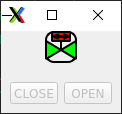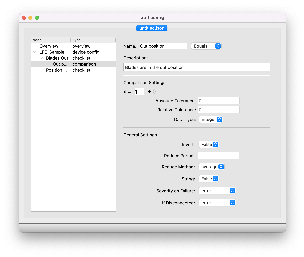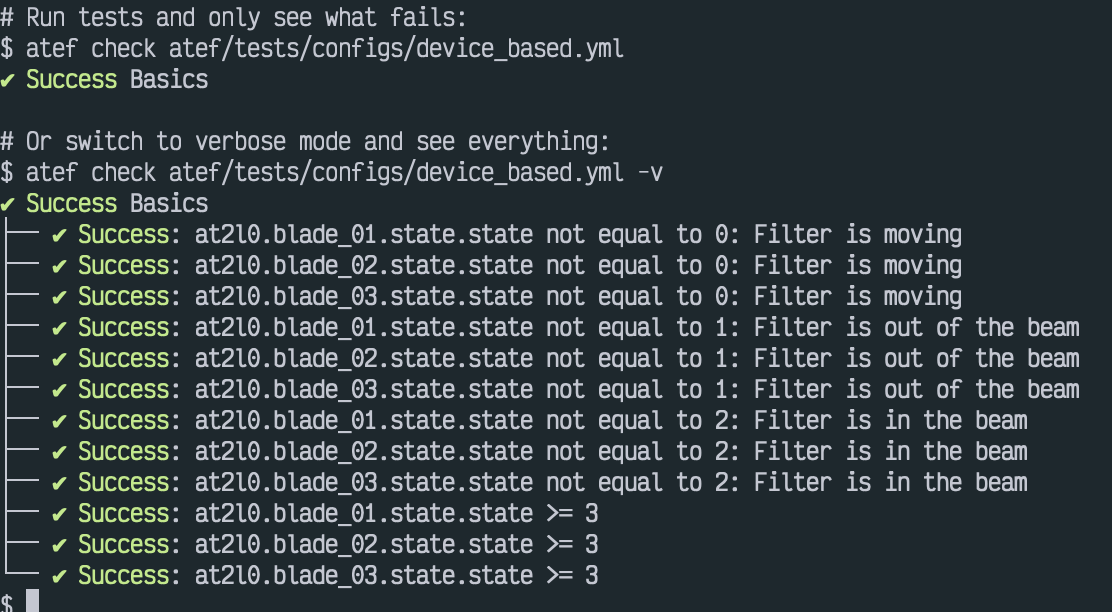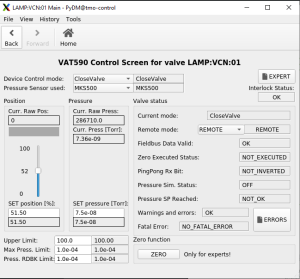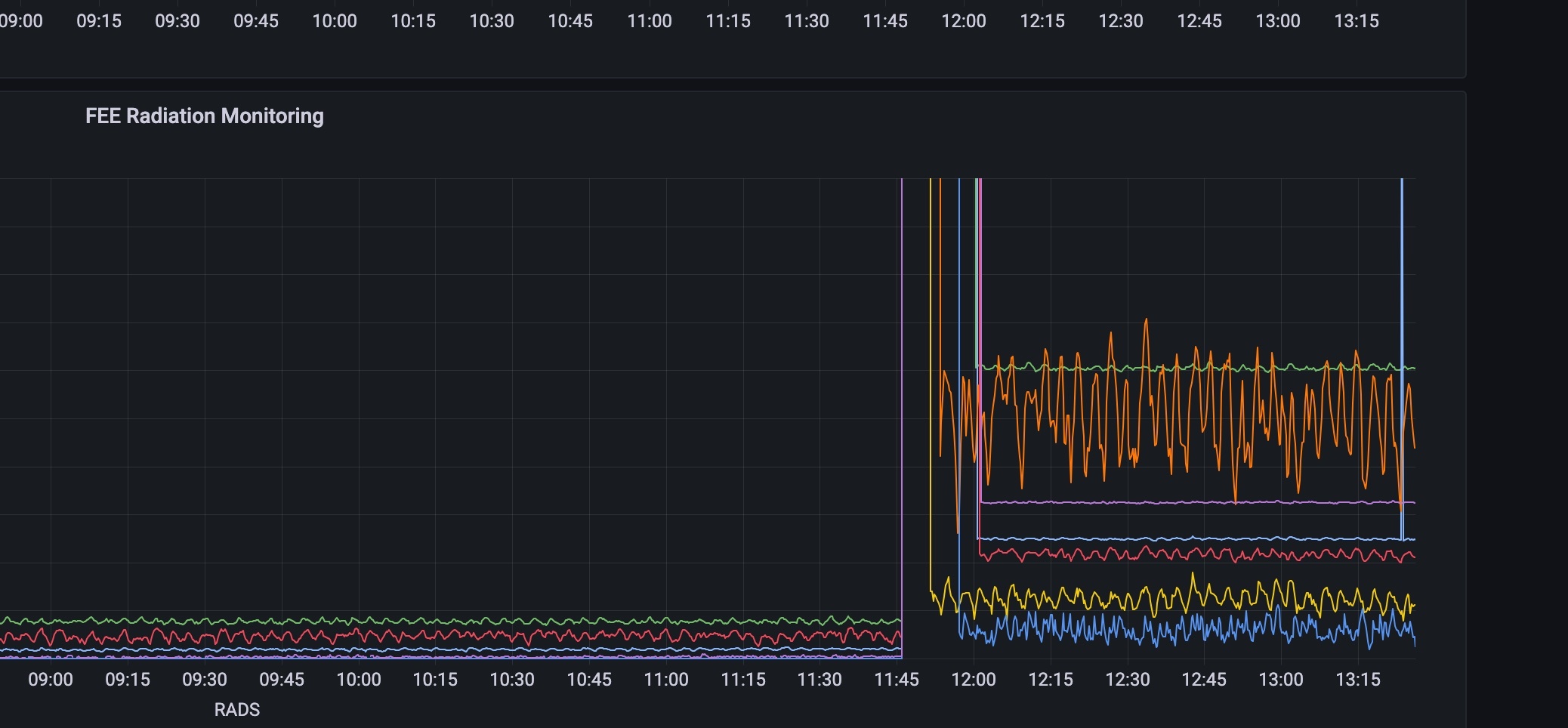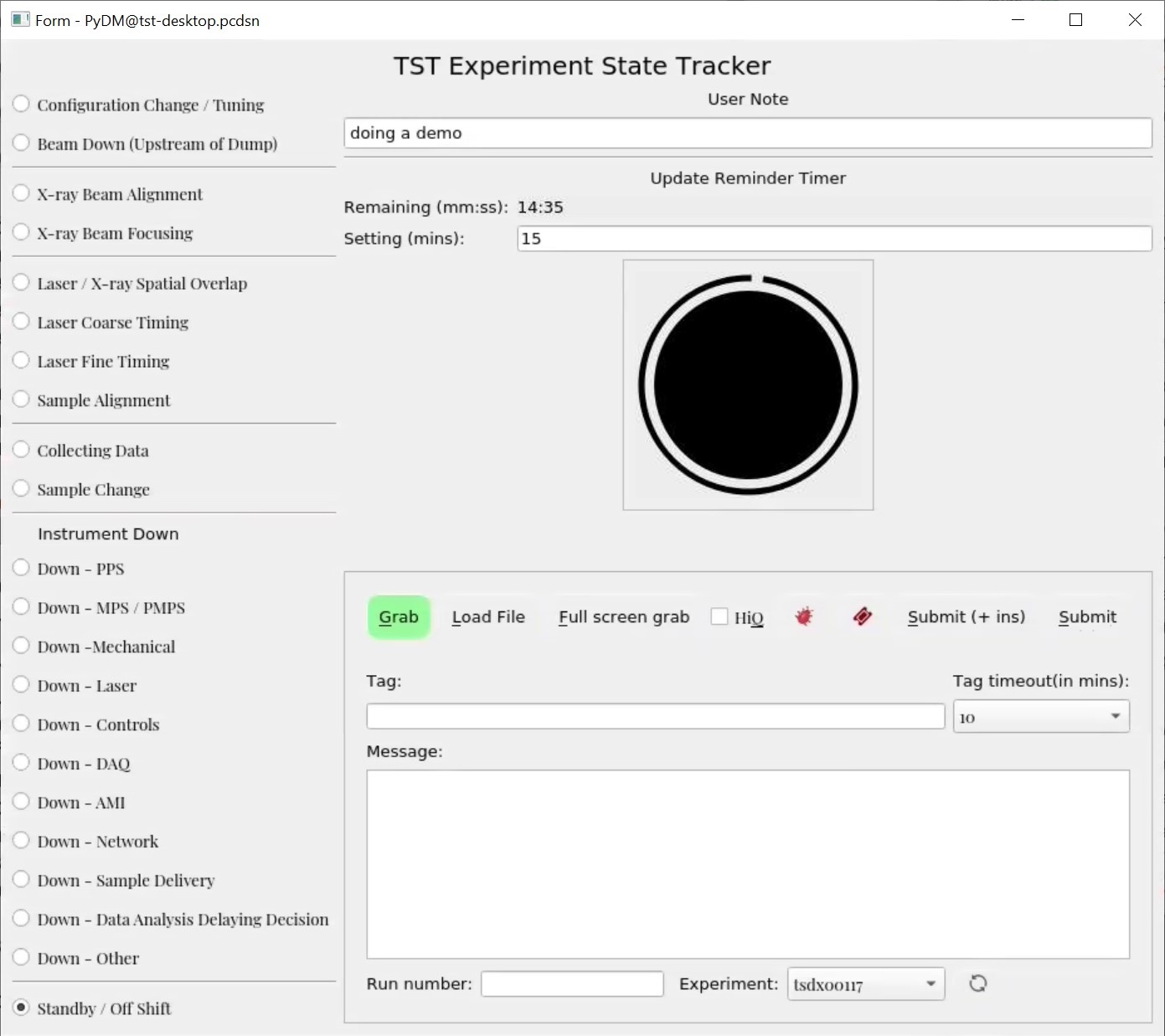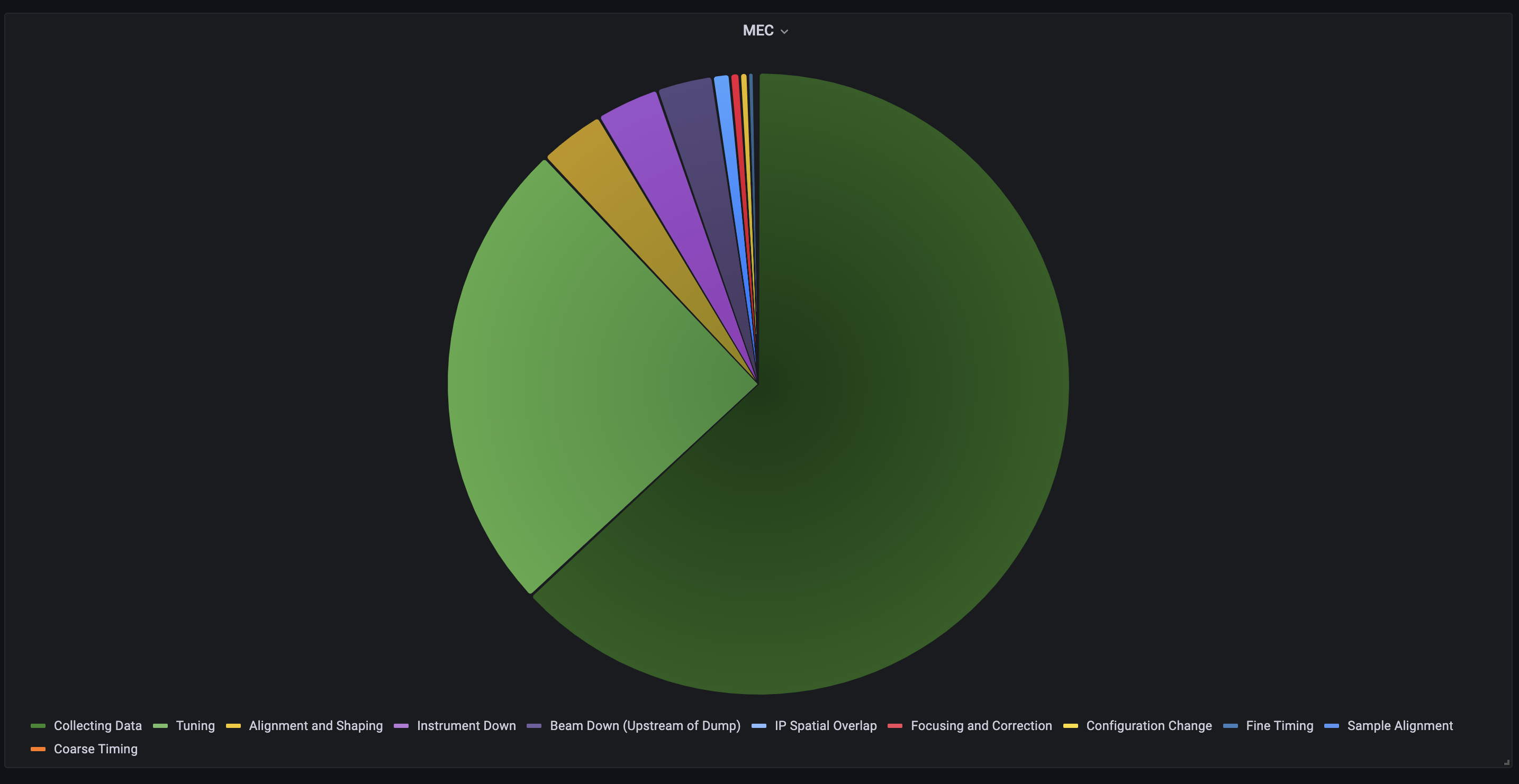Target Release Date
Final edits due
Introduction
HE update
Roles and Team update
L2HE Project Roles and assignment table can be found here.
MECU-update
Rack allocations
Other controls requirements
LLE+LLNL Visit
Hutch Python Update
Hutch python's conda environment was updated to pcds-5.3.1 near the start of April
You can read the full release notes here: PCDS Conda Release Notes: pcds-5.3.1
Robert S. Tang-Kong Zachary L Lentz
New Dual-Acting Valve Widget
Dual acting valves are now integrated into pcdswidgets with a nice looking icon to represent the functionality of the valve.
Extensive documentation on the process of making a new pcdswidget was provided as well as scripts for testing widgets in development.
Position Lag Monitoring
- Add metric plots
- Add any conclusions drawn regarding this issue, and corrections.
- Would be nice to see the counts trending down on account of some PLM threshold changes.
Lightpath Campaign
Robert S. Tang-Kong Zachary L Lentz
New ECS PD Campaign: Code Review
Where we are now
ECS currently provides nearly all of our hutch-python and related Python source code in the pcdshub organization on GitHub.
We utilize a standardized workflow wherein:
- We have a canonical repository in the pcdshub organization.
- We create forks of repositories in our individual GitHub accounts.
- We create per-feature branches and open Pull Requests to the primary repository.
- We describe, in detail, the changes we are making and the implications of those changes.
- We ensure that our tests remain passing.
- We review, check, and eventually approve each set of changes.
This offers several major benefits:
- It allows for ECS engineers to more easily work together, using the standardized workflow described above.
- Code is no longer just developed in isolation with a solo engineer's effort. There is a shared understanding of what is going on and why.
- Being open to the public, it enables easy collaboration with our partner laboratories and other interested parties in the XFEL/synchrotron communities.
- Continuous Integration - each of our repositories has a set of tests that ensure the code remains in the intended working state.
- These tests are automatically run on every commit pushed to GitHub. It's like having an additional set of eyes on your code all the time, or an automatic reviewer of sorts.
- We can automatically published documentation in an easily-accessible location on the web.
- We can share tooling among all our projects.
- We catch more issues and bugs earlier in the development process than we would otherwise.
- We reduce maintenance efforts by a combination of all of the above.
Where we want to be
We want to take our same standards that we apply to Python development and bring it forward to all PLC, EPICS module and EPICS IOC development.
The goal here is not to just create Pull Requests but rather follow a code review process. We also need to be sure that an appropriate amount of effort is being spent on the process and not overlooked.
To reach that goal, we will need to make a concerted effort to:
- Bring all of our EPICS modules and IOCs on GitHub
- Ensure consistency between our local AFS-based repositories and those on GitHub
- Work on continuous integration tools for:
- Automatic linting of EPICS IOC process databases
- Automatic EPICS IOC and module building
- Take into account the social aspects of the change. We need to set expectations and ensure that both the submitter and reviewer are on the same page.
- PR submitters need to respect the reviewers' time by providing enough context about the goals of changes and promptly responding to questions.
- Code reviews can feel personal at times to the submitter, even if the reviewer is merely commenting on code.
- A glance often isn't enough - reviewers need to give their due diligence to ensuring the changes are as described and without side-effects.
There are a number of standards to be defined and technical decisions to be made during our campaign. We are only just beginning with this, and any input would be appreciated.
ATEF Status Update
We are continuing on our refocused ATEF development effort, targeting passive testing of control system devices. The "passive" portion of this means that it will be fully-automated and non-intrusive (that is, it will not move your motors or otherwise directly cause a PV to change).
We are making progress on the user-facing components of atef for passive checks. This includes a work-in-progress set of GUI elements, allowing for a more straightforward specification of a passive checkout configuration, with a happi device search tool and ophyd device inspector. A preliminary command-line based passive check running tool has also been developed.
Future development will include: active tests (guided, with humans in the loop) including integration with bluesky, a synoptic for viewing the atef-reported status of all devices, integration with Grafana, views of devices in typhos/hutch-python at a given time in the past, and many other things.
shared-dotfiles
What are dotfiles?
- Dotfiles are configuration files that sit in your home directory, like
.bashrc. - Dotfiles set per-user configuration settings for different applications, like the text editor vim or your shell.
- If you have a unix account, you likely have dotfiles in your home directory on pslogin, whether you have customized them or not.
In a survey of users' configurations, we found that many were similar, likely copied and tweaked from one user's home directory to another when they joined ECS.
In some strange form of the telephone game, a bit of meaning was lost between each successive copy, with configuration lines remaining with not a clue as to why they were there.
We then set off on a goal to create a shared repository that allows for a good starting point for new engineers, or existing ones that want to improve (or just better understand) their settings.
Almost every line contains an explanation as to why it is there, with some offering suggestions as to how to adjust it to your preference.
Here is a link to that repository:
→ https://github.com/pcdshub/shared-dotfiles
It includes a variety of suggested configuration files for various basic tools like ssh, bash, vim, and so on that ECS staff and others who use the same computing infrastructure may find useful.
It also explains a bit about what scripts are available and how to better navigate your environment in its documentation.
QRIX Controls
The Spectrometer Arm has been installed and checked out. The spectrometer arm has a total of 27 axes installed with coupled and coordinated motion with strict EPS requirements. The acceptance test went very well with Toyama and even were complete ahead of schedule.
The QRIX vacuum PLC code has been merged with that of the spectrometer arm. The vacuum controls integration is complete for all the installed devices.
TXI
Cables were successfully pulled in the FEE for patch panels for both K and L lines.
TMO
First deployment of VAT590 variable valve in LAMP. Jing Yin Govednik, Janez Maarten Thomas-Bosum
This was used with the Magnetic Bottle (MBES) iteration of the LAMP endstation.
<To do: Fill in more Summary here>
Documentation page: LAMP MBES Variable Leak Valve Commissioning 3/22
Facility Monitoring System Update
Cynthia Melendrez Tyler Johnson
Radiation Monitoring in the FEE
We began taking initial Radiation measurements in the FEE! From four different locations we gained 2 sensor readouts each. Here we see Hard Xray beam energy mapped against dose rates.
A shift was made to bring the rest of the sensors online. Looking forward to collecting more data this month!
X-ray Optics Controls Updates
MR1L3, MR2L3, and MR1L4 XRT HOMS Mirrors
- Temperature sensors added to XRT HOMS Temperature
- State Control fully implemented! We can now reach mirror coating positions and move the mirrors in and out of the beam with one click!
MR1K4 FEE TMO Mirror
- Newly upgraded with coating state control.
- PMPS states implemented.
MR3K4, MR4K3, MR2L1, and MR3L1 TXI Mirror
- Site Acceptance complete: TXI SAT
MR4K4, MR5K4 TMO DREAM Mirror
- Granite installed/Mirror moved into the hutch.
- Controls fully checked out: DREAM Install
- Coming: Internal RTD, Pressure, and Flow Sensors.
MR2K4, MR3K4 TMO LAMP Mirror
- Look for some higher performance in the axis control
- Control loops changed and Deadbands tightened
Experiment State Tracker and Eloggrubber
Based on popular demand, the Experiment State Tracker has been integrated with the eloggrubber and the possible state list has been extended (with much more detail for 'instrument down' in particular.)
The eloggrubbers JIRA implementation has changed to allow automatic assignment to the instruments as well as posting of the attachments Murali Shankar
Grafana has also been extended to allow the creation of piechart data from the archived Experiment State Tracker output.
Jungfrau [0.5/1]M IOC
The smaller jungfrau detectors which use a Rohde-Schwartz power supply now have an IOC (ioc/common/roving_jf) to make the process of turning them on/off consistent with the various epix-detectors. This IOC will trip the detector should a problem with the chiller flow or power supply is detected.
Jungfrau4M Tripper
Timing moves to RHEL7
CSU Chico Engineering Capstone Collaboration
This year Diling Zhu has sponsored the collaboration project (many thanks Diling!), which is to develop a prototype system for determining interaction point alignment using machine vision. In early March, the CSU Chico Engineering Capstone Collaboration project team visited XPP to do some final fit measurements around the interaction point for installation of their project later this year.
For the past five years LCLS departments (SED and ME) have sponsored projects with the Mechanical/Mechatronic Engineering departments of CSU Chico for their engineering degree capstone. Each year the collaboration project offers a chance for LCLS to develop prototype concepts, or even to offload a manageable portion of work to a team of 4-5 students and a faculty advisor (for a nominal fee + M&S). More importantly these projects offer us a chance to discover talented candidates that we can hire. If you have an idea for a project, please contact Alex Wallace for details. On a final note, this year we are excited to announce that we hired another student from the collaboration project, Mitchell Cabral. He will join ECS as a control system integrator in June.
HXR Single Shot Spectrometer Updates
IT Updates
Spencer, Aalayah I Omar Quijano
Network Reorganization
WEKA HOME/FFB Cluster Upgrade
Workstations and Servers Matrix
Remote Operations Hardware Maintenance Schedule
Integrate UED to LCLS Standards
New Ciara Purchase
*ioc-xrt-rec07
*SRCF Data Mover Bandwidth Upgrade
*GNOME Key Binding Shortcuts
UPCOMING
Batch Nodes
DSS Nodes
CXI Network Upgrade
Switch Tool
Diskless Server Upgrade
Diskless Monitoring
750 Pit Cleanup Progress
Omar Office Cleanup Progress (per DFlath) LOL ?!
